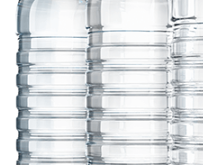Today food dye additives are in almost everything and it’s very popular.
Among these additives, Red Number 3, also known as Erythrosine, stands out for its bright color.
Recent scientific research has raised concerns about the potential health risks associated with this additive.
I never knew these artificial dyes were bad.
Understanding Red Number 3

Red Number 3, or Erythrosine, is a synthetic dye that belongs to the xanthene class of dyes.
It was first synthesized in the late 19th century and gained popularity as a food coloring due to its bright red hue.
Approved for use in foods and cosmetics by regulatory bodies such as the FDA in the United States and the European Food Safety Authority (EFSA) in Europe, Red Number 3 is commonly found in various food products including candies, baked goods, beverages, and dairy products.
Health Risks Associated with Red Number 3
Research has linked this synthetic dye to various health issues, including thyroid tumors, chromosomal damage, and hypersensitivity reactions in some individuals.
A study was done in 1997 that was titled “Estrogenic and DNA-damaging activity of Red No. 3 in human breast cancer cells.” I think that says it all.
Red No. 3 is recognized as both estrogenic and DNA-damaging.
Animal studies have shown poor outcomes with reproductive health, raising further concerns about its safety.
Long before 1985, Red No. 3 was found to have “major toxic manifestations”.
These toxicities were said to be “indicative of central nervous system depression”.
Problems with Red Number 3:

- Allergic reactions: Some individuals may experience allergic reactions such as hives, itching, or swelling after consuming products containing Red Dye #3.
- Hyperactivity in children: Some studies suggest a link between artificial food colorings, including Red Dye #3, and hyperactivity in children with attention deficit hyperactivity disorder (ADHD).
- Thyroid tumors: Animal studies have shown that high doses of Red Dye #3 can lead to the development of thyroid tumors.
- DNA damage: Research has indicated that Red Dye #3 may have genotoxic effects, causing damage to DNA.
- Reproductive toxicity: Studies in animals have suggested that Red Dye #3 has reproductive toxicity, including effects on fertility and fetal development.
Regulatory Perspective
While Red Number 3 is approved for use in food and cosmetics by regulatory agencies, including the FDA and EFSA, the controversy surrounding its safety persists.
Red #1, 2, an4 have been banned but #3 keeps getting skipped over.
Consumer Awareness and Choices
Seeking out alternatives to products containing Red Number 3, such as those using natural food colorings, can help minimize exposure to this synthetic dye.
This one is usually in the ingredient list, so keep an eye open for it.
Red Number 3, or Erythrosine, has become a controversial ingredient in the food industry due to emerging concerns about its potential health risks.
Red Number 3 (Erythrosine) is commonly found in a variety of food products, including:
1. Maraschino cherries
2. Candies and confections
3. Gelatins and puddings
4. Bakery items such as cakes, cupcakes, and frostings
5. Desserts and sweet treats like ice cream and frozen desserts
6. Processed meats like sausages and ham
7. Beverages such as fruit-flavored drinks and sodas
8. Dairy products like flavored yogurts and cheeses
9. Packaged snacks like chewing gum and flavored popcorn
10. Certain medications and oral healthcare products like mouthwash.
 Growing Younger Everyday What Works For Me
Growing Younger Everyday What Works For Me





